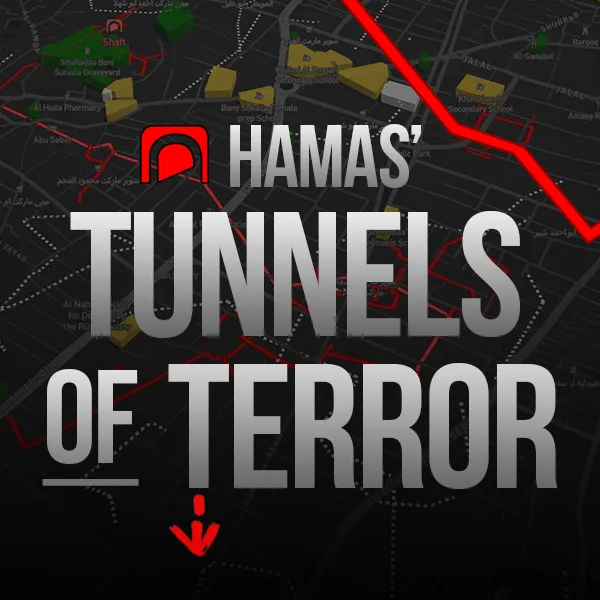Key Takeaways:
-
Zakaria Zubeidi’s record – Veteran Al-Aqsa Martyrs Brigades commander with decades of attacks, rejected peace deals, and recent terror convictions, overshadowed by praise for his 2021 jailbreak.
-
The New York Times pattern – A familiar formula: reframing Palestinian terror as “resistance” while minimising the suffering of Israeli victims.
-
Hold the NYT to account – Read the piece, then call them out on social media. Romanticizing terrorists and erasing victims is not journalism.
There is a double standard in how much of the media treats terrorism – one set of rules for most perpetrators, another for those who are Palestinian and whose victims are Israeli Jews.
Time and again, some of the most brutal attacks on civilians are presented with a kind of reverence, as though sadistic violence were simply part of a noble struggle. When Israeli Jews are murdered in their homes or on their way to work, the narrative bends toward portraying the killer as a “resister of occupation.”
The New York Times’ recent “global profile” of convicted murderer Zakaria Zubeidi is a textbook example. Zubeidi, a veteran commander of the Al-Aqsa Martyrs Brigades with decades of terrorist activity to his name, was freed in a hostage-for-prisoners swap with Hamas, having been jailed for his role in two West Bank shooting attacks in 2018 and 2019, and later making international headlines for his 2021 escape from Israel’s Gilboa Prison.
1/
Despicable from @nytimes.
When the terrorist is Palestinian and his victims are Israeli Jews, the whitewash begins.
Zakaria Zubeidi — unrepentant mass murderer — gets the hero treatment.
Crimes blurred. Victims erased.
Let’s break down this vile feature 🧵 pic.twitter.com/hQBAArrsPx— HonestReporting (@HonestReporting) August 13, 2025
His role in the shootings just years ago barely registers in the Times’ telling, eclipsed by what it calls his “most memorable” of several “exploits”: the 2021 Gilboa Prison escape. The account reads like a Hollywood screenplay, with Zubeidi crawling through a “32-yard tunnel” from the bathroom of his cell before emerging into “freedom flooding [his] veins.” It’s a passage that could have been lifted straight from The Shawshank Redemption.
The admiration doesn’t stop there. Readers are told that “in time, Mr. Zubeidi took a more nuanced approach to battling Israel” – a grotesque euphemism for moving from gun and grenade attacks to the more palatable image of “cultural resistance” through his later involvement in a Jenin theater. This came after Israel granted him amnesty in 2007, alongside other militants who agreed to give up arms – an agreement Zubeidi never honored. What the Times does not explore is how this artistic credential sat alongside the record of a man who continued to orchestrate deadly terrorist operations.
Related reading: Jenin: The Palestinian Terror Capital & Its Threat to the Region
The omissions are telling. In place of these facts, the article substitutes distortion. The Second Intifada—a sustained campaign of suicide bombings and shootings against civilians—is described as having had its “immediate spur” in a “provocative visit” by Ariel Sharon to the Temple Mount, without noting that Yasser Arafat had planned it months earlier. It is characterized as “protests morphing into an armed uprising,” erasing the calculated mass-casualty intent from the outset.
And the timeline matters. During the early 2000s, when Zubeidi was described as the Jenin commander of the Al-Aqsa Martyrs Brigades, Israeli leaders tabled multiple proposals that would have created a Palestinian state: the 2000 Camp David offer, the 2001 Taba talks, and the 2008 Olmert proposal. Each included the vast majority of the West Bank, Gaza, and a capital in eastern Jerusalem. Each was rejected by the Palestinian leadership.
These were not the actions of a man with “no other option.” They were the actions of a man choosing violence over peace, even when peace was on the table.
The profile closes with Zubeidi reflecting that his life as a militant, theater work, and prisoner had “proved futile” because none of it helped to establish a Palestinian state. The effect is to leave readers with the image of a tragic, romantic figure – not an unrepentant mass murderer.
The New York Times did not merely report on Zubeidi. It rehabilitated him. The omissions are deliberate. The distortions are deliberate. And the victims, erased from the record, are once again denied the dignity of truth.
Read the Times piece yourself. Then hold them to account. Comment on their posts across Instagram and Facebook. Remind them that romanticizing terrorists and erasing their victims is not journalism. It is propaganda.
Liked this article? Follow HonestReporting on Twitter, Facebook, Instagram and TikTok to see even more posts and videos debunking news bias and smears, as well as other content explaining what’s really going on in Israel and the region. Get updates direct to your phone. Join our WhatsApp and Telegram channels!


